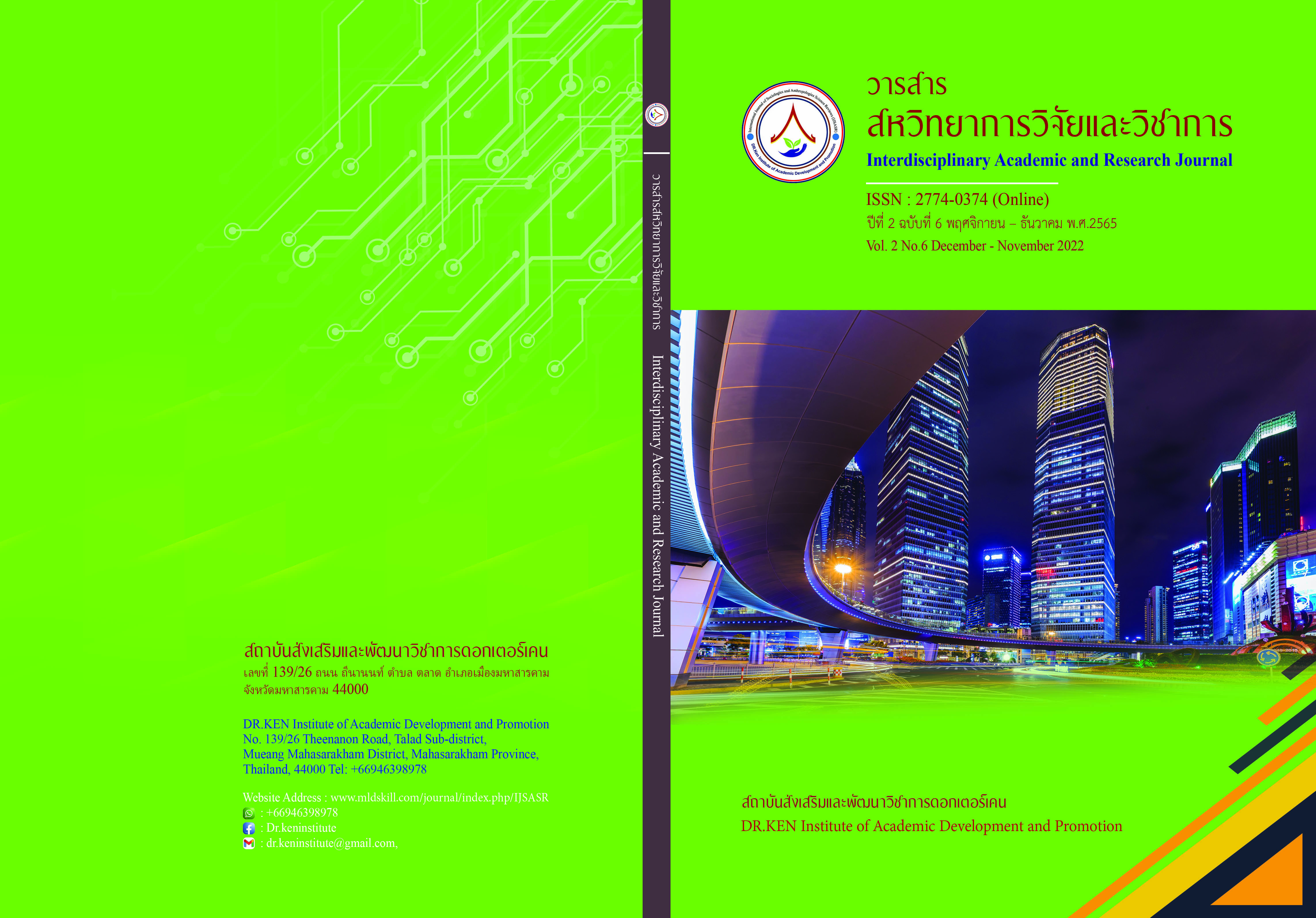Effects of Organizing Learning Activities in Thai Language by Using Reading Comprehension Instructional Media Named Reading Comprehension and its Applicability to Daily Life for Primary 4 Students
DOI:
https://doi.org/10.14456/iarj.2022.162Keywords:
Thai Subject;, Reading Comprehension; , Primary StudentAbstract
Reading is a key skill to improving thought and intelligence. Thus, instructional media to improve reading skills are important tools in the instructional organization of Thai and foreign languages in relation to thought improvement. This research, which is qualitative and experimental, aims to analyze Thai language teaching achievement and satisfaction when product and medicine labels, as an instructional media named “Painkiller, Milk, and Sweets”, are used among primary 4 students from 5 purposively sampled schools in Chaloem Phra Kiat district: Anuban Thachang, Sai-Ngam Chalermprakiat, Ban Nontawit, Pimanprachasan, and Phetmatukla. Research Instruments are students’ pre-test and post-test scores as well as teachers’ satisfaction questionnaires. For the teaching achievement, the research found that the test average score of the samples was increased when the Pre-test and post-test were compared (Anuban Thachang: 6.24/8.96, Sai-Ngam Chalermprakiat: 5.5/9, Ban Nontawit: 5.43/8, Pimanprachasan: 5.5/7.88 and Phetmatukla: 6.64/9.21). For the instructional media satisfaction, from the 5 scaled score, it was reported that the teachers using the instructional media averagely rated 4.24 for the teaching activity, 4.52 for the instructional media, and 3.96 for the pedagogic contribution. These findings contribute to the further development of instructional media and learning innovations for teaching reading comprehension and its applicability to daily life as well as of pedagogic activities for reading literacy in both prose and poetry.
References
ไกรษร ประดับเพชร. (2561). การพัฒนาแบบฝึกทักษะโดยใช้เทคนิคการอ่านแบบ SQ4R เพื่อส่งเสริมทักษะการอ่านจับใจความของนักเรียนชั้นประถมศึกษาปีที่ 3 โรงเรียนไตรคามประชาสรรค์. สำนักงานเขตพื้นที่การศึกษาประถมศึกษาขอนแก่น เขต 2 สำนักงานคณะกรรมการการศึกษาขั้นพื้นฐาน กระทรวงศึกษาธิการ.
ปิยะวรรณ ปานโต. (2563). การจัดการเรียนการสอนของไทยภายใต้สถานการณ์การแพร่ระบาดของโรคติด เชื้อไวรัสโคโรนา 2019 (COVID–19). กรุงเทพฯ: สำนักงานเลขาธิการสภาผู้แทนราษฎร
ราชกิจจานุเบกษา. (2561). ยุทธศาสตร์ชาติ พ.ศ.2561-2580. ราชกิจจานุเบกษา เล่ม 135 ตอนที่ 82ก วันที่ 13 ตุลาคม 2561.
วรพจน์ นวลสกุล. (2551). เอกสารประกอบการฝึกอบรมหลักสูตร การตัดต่อวีดิทัศน์ระบบนอนลิเนียร์ รุ่นที่ 9 “การบูรณาการวีดิทัศน์กับสื่ออิเล็กทรอนิกส์อื่น” ฝ่ายเทคโนโลยีทางการศึกษาสำนักวิทยบริการ มหาวิทยาลัยอุบลราชธานี. อุบลราชธานี: มหาวิทยาลัยอุบลราชธานี.
วิภาพร ทองฟู. (2563). ปัจจัยที่สัมพันธ์กับทักษะการอ่านของนักเรียนระดับชั้นประถมศึกษาปีที่ 4 โรงเรียน สามเสนนอก (ประชาราษฎร์อนุกูล) สำนักงานเขตดินแดง สังกัดกรุงเทพมหานคร. การศึกษาค้นคว้าอิสระศึกษาศาสตรมหาบัณฑิต สาขาวิชาการจัดการการศึกษา: มหาวิทยาลัยหอการค้าไทย.
เสวภา ช่วยแก้ว. (2558). การพัฒนาความสามารถในการอ่านจับใจความของนักเรียนชั้นประถมศึกษาปีที่ 3 ด้วยแบบฝึกการอ่านจับใจความโดยใช้เทคนิค KWLH PLUS. Veridian E-Journal Silpakorn University. 8 (2), 1-16.
อรพัทธ ศิริแสง. (2558). การศึกษาความสามารถด้านการอ่านจับใจความของนักเรียนชั้นประถมศึกษาปีที่ 4 1ที่ใช้วิธีสอนอ่านแบบ MIA. Veridian E-Journal Slipakorn University. 8 (3), 864-879.
Tk parkออนไลน์. (2562). อ่านมากขึ้น อ่านไม่ออก และการรู้หนังสือ. [Online] https://www.tkpark.or.th/tha/articles_detail/408/อ่านมากขึ้น-อ่านไม่ออก-และการรู้หนังสือ [1 พฤศจิกายน 2564]
Downloads
Published
How to Cite
Issue
Section
License
Copyright (c) 2022 Wachirarat Nirantechaphat, Sasasiri Suwannathip

This work is licensed under a Creative Commons Attribution-NonCommercial-NoDerivatives 4.0 International License.
Copyright on any article in the Interdisciplinary Academic and Research Journal is retained by the author(s) under the under the Creative Commons Attribution-NonCommercial-NoDerivatives 4.0 International License. Permission to use text, content, images, etc. of publication. Any user to read, download, copy, distribute, print, search, or link to the full texts of articles, crawl them for indexing, pass them as data to software, or use them for any other lawful purpose. But do not use it for commercial use or with the intent to benefit any business.
















.png)


